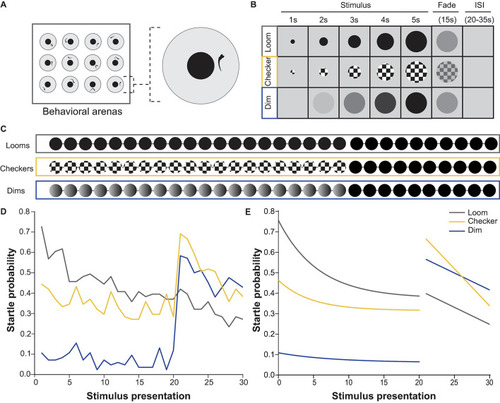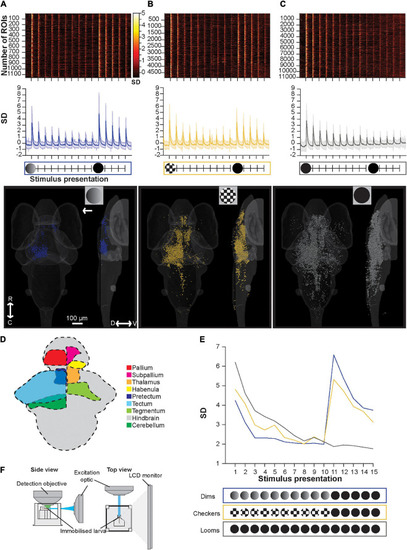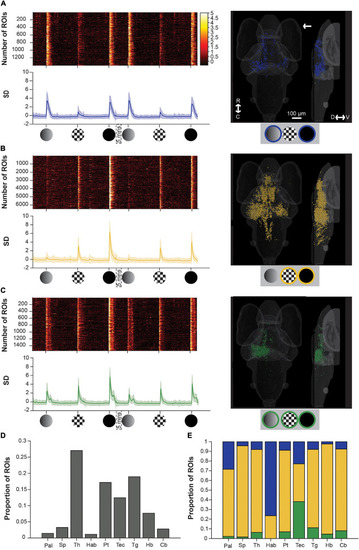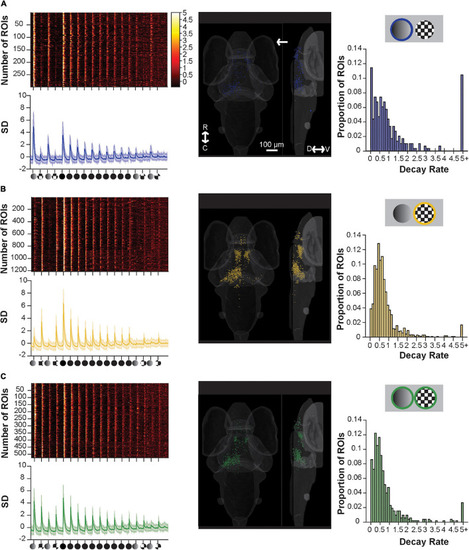- Title
-
Contributions of Luminance and Motion to Visual Escape and Habituation in Larval Zebrafish
- Authors
- Mancienne, T., Marquez-Legorreta, E., Wilde, M., Piber, M., Favre-Bulle, I., Vanwalleghem, G., Scott, E.K.
- Source
- Full text @ Front. Neural Circuits
|
Behavioral responses to repeated loom, checkerboard, and dim stimuli. |
|
Brain-wide calcium responses to repeated loom, checkerboard, and dim stimuli. |
|
Brain-wide calcium responses to dim, checkerboard, and loom stimuli. |
|
Component sensitive responses and their associated rates of habituation. |




